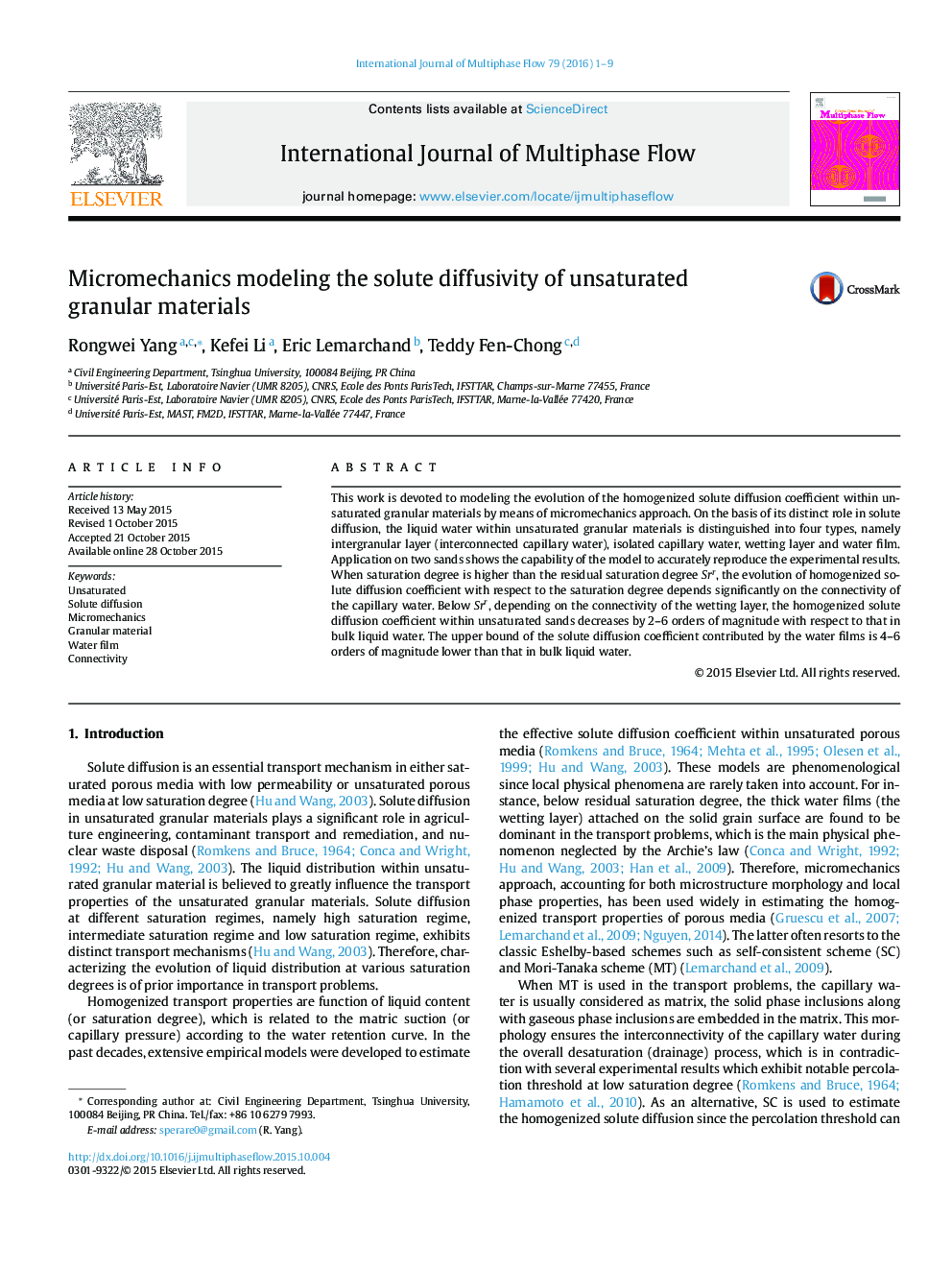| Article ID | Journal | Published Year | Pages | File Type |
|---|---|---|---|---|
| 667052 | International Journal of Multiphase Flow | 2016 | 9 Pages |
•Four types of liquid water are distinguished within unsaturated granular materials.•A micromechanics model is developed to estimate the unsaturated solute diffusion coefficient.•Below residual saturation degree, the solute diffusion coefficient decreases by 2–6 orders of magnitude of bulk water.•The maximum solute diffusion contributed by water films will be 4–6 orders lower than that of bulk water.
This work is devoted to modeling the evolution of the homogenized solute diffusion coefficient within unsaturated granular materials by means of micromechanics approach. On the basis of its distinct role in solute diffusion, the liquid water within unsaturated granular materials is distinguished into four types, namely intergranular layer (interconnected capillary water), isolated capillary water, wetting layer and water film. Application on two sands shows the capability of the model to accurately reproduce the experimental results. When saturation degree is higher than the residual saturation degree Srr, the evolution of homogenized solute diffusion coefficient with respect to the saturation degree depends significantly on the connectivity of the capillary water. Below Srr, depending on the connectivity of the wetting layer, the homogenized solute diffusion coefficient within unsaturated sands decreases by 2–6 orders of magnitude with respect to that in bulk liquid water. The upper bound of the solute diffusion coefficient contributed by the water films is 4–6 orders of magnitude lower than that in bulk liquid water.
